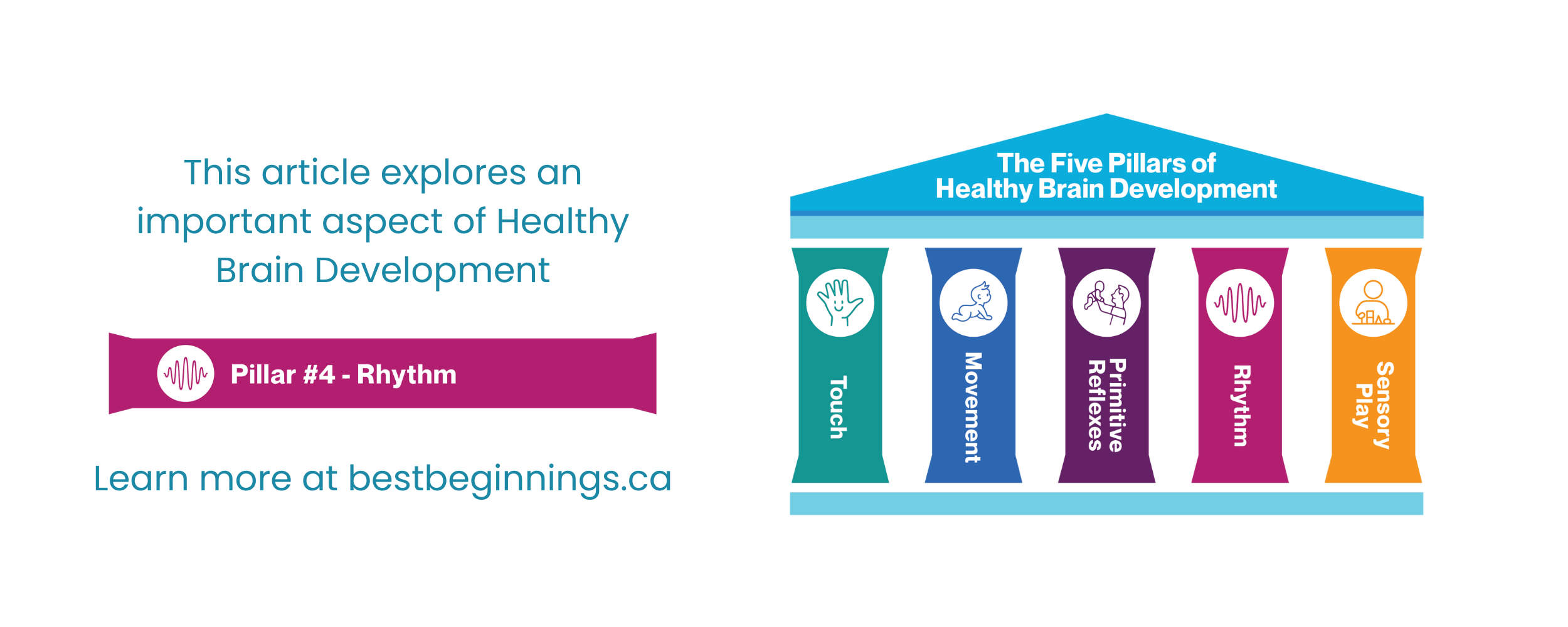How Singing to Baby Boosts Language and Brain Development
From the moment Baby hears your voice, they begin learning about rhythm, sound, and connection. Singing is one of the simplest and most powerful ways to support Baby’s brain development. Whether it is a lullaby, a nursery rhyme, or your favorite tune sung softly, your voice becomes a signal of safety, love, and predictability.
When you sing, Baby’s brain responds to rhythm and melody. These patterns help develop pathways for listening, attention, and speech. The gentle repetition in songs helps Baby recognize sounds and anticipate what comes next, which supports early language learning and memory (1). Even before they can speak, Baby is tuning into the cadence of your words and the emotion in your tone, laying the foundation for later communication (2).
Music also supports Baby’s emotional world. The sound of your voice, combined with rocking, swaying, or gentle movement, helps regulate Baby’s breathing, heart rate, and nervous system. Singing during feeding, diaper changes, or bedtime helps Baby feel calm and connected. These musical moments are more than soothing — they strengthen the secure attachment between you and Baby. When Baby feels safe and understood, their brain can focus on growth, learning, and curiosity (3).
How to Add More Song and Rhythm to Your Day
You do not need musical talent to make this special. Choose songs that you enjoy — nursery rhymes, gentle lullabies, or even your favorite tunes slowed down to a soothing tempo. Rock, sway, or tap to the beat as you go about your day. You can add rhythm to almost anything: sing while getting Baby dressed, hum during car rides, or chant softly during tummy time. These simple musical rituals turn ordinary moments into opportunities for calm and connection.
Music does not have to be perfect to be powerful. Baby loves your familiar voice more than any professional performance. When you sing, their breathing and heart rate often sync with yours, helping to regulate Baby’s nervous system and calm their body. The steady beat of your rocking and the gentle repetition of melody give Baby’s brain predictable patterns that feel safe and comforting. Even short bursts of song — like humming the same tune before naps or bedtime — help Baby learn that these rhythms signal it is time to rest.
Over time, these musical moments become a shared language between you and Baby. Singing together is a way to express joy, comfort, and belonging. It strengthens your bond and stimulates Baby’s brain areas for language, memory, and emotional understanding. Each verse, rhyme, or gentle hum helps Baby’s brain grow one beat at a time.
If you would like to explore more ways to nurture Baby’s development through rhythm and touch, the Best Beginnings Infant Massage and Movement Program offers easy, research-based activities that build connection and support early brain growth.
References
Putkinen, V., Saarikivi, K., & Huotilainen, M. (2013). Interactive music lessons enhance auditory cortical responses in 2–3-year-old children. Frontiers in Psychology, 4, 1116.
Trehub, S. E., & Gudmundsdottir, H. R. (2019). Music in infancy. In S. Hallam, I. Cross, & M. Thaut (Eds.), The Oxford handbook of music psychology (2nd ed.). Oxford University Press.
Field, T. (2014). Touch and music therapies: Early interventions for infants with developmental challenges. Infant Behavior and Development, 37(4), 666–675.



